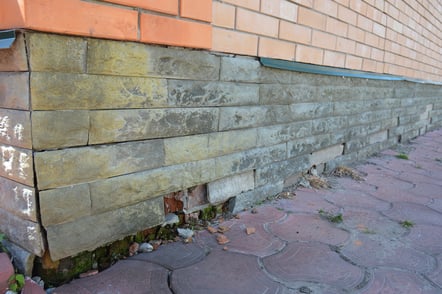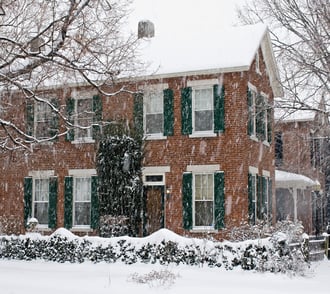The beautiful colors of Fall are on full view, but as a homeowner you know that along with enjoying nature's palette, the season brings you extra chores, such as dealing with all the fallen leaves in your yard - and in your rain gutters. Before the cold winter months start, it's crucial to clean out those gutters to prevent more serious problems.
The typically cold, wet winters we experience in Washington DC can mean trouble for your historic home. One of the most detrimental things of all is water, an insidious home invader that can seep in through the smallest opening and do considerable damage, often even before the leak is discovered. The solution? Some simple maintenance, specifically being diligent about cleaning out your rain gutters, can prevent the blockages that lead to water damage.
Clogged Rain Gutters Cause Major Complications
The primary purpose of your rain gutters is to facilitate the flow of rainwater from the roof to the ground, channeling it away from your foundation to prevent water damage, and protecting your home from moisture intrusion. As simple as that sounds, when leaves, twigs, and other seasonal debris clog them, the rain gutters will no longer be able to function properly. The more clogged the gutters, the bigger the problem: the rainwater builds up and weighs down the gutters, causing them to fail or even worse, to break.
If you live in an area with tree-lined streets or have lots of trees on your property, you know how quickly the autumn rain and wind can bring those leaves down all over the yard. While raking leaves to the curb for pickup is a common fall chore, homeowners must also remember to stay aware of other less obvious places where leaves and debris gather, such as rain gutters.
As fall turns to winter, and temperatures continue to plummet, another serious problem arises: the formation of ice dams on clogged gutters. This happens when the standing water in a clogged drain freezes. When water and snow accumulate on the roof above the gutter and freeze, it piles up on existing ice, causing an ice dam. Water backs up behind this dam and takes the path of least resistance – underneath roofing material and into your home. This can cause water damage on interior walls, peeling wall paint, sagging ceilings, warped floors, water stains, and sodden overhead insulation, which can result in dangerous mold.
Being Proactive Can Help Prevent Winter Water Intrusion
Instead of dealing with catastrophic outcomes by waiting too long, be sure to schedule the time to thoroughly clean out all gutters and downspouts after the last of the fall leaves has dropped. If your location has an excessive amount of leaves, you'll probably need to perform this chore more than once to prevent buildup and clogs. You should also take this opportunity to inspect your guttering and make any necessary repairs on broken, leaking, or sagging gutters and downspouts.
Additionally, it's highly recommended to inspect the attic or overhead crawlspace in your home for sufficient insulation and proper ventilation. When a steady temperature is maintained just below the roof, it allows the roof to shed water naturally during winter. Uneven heating and poor insulation in the attic warms only the higher portion of the roof, but leaves lower portions cold. Air enters at the eaves as heat inside the attic rises. These cold eaves cause the water to freeze at the roof’s edge, contributing to ice dam formation.
If you notice moisture in your attic or crawlspace, you may need to investigate further to prevent more severe water intrusion. If your outside brick façade has cracks or bulges, Renaissance Development can perform an evaluation and provide an estimate for repairs. We excel at brick tuckpointing and repairing masonry damaged by water intrusion.
Contact us today for all your historic tuckpointing, exterior masonry, and urban garden needs.
Nov 8, 2022 8:00:00 AM


